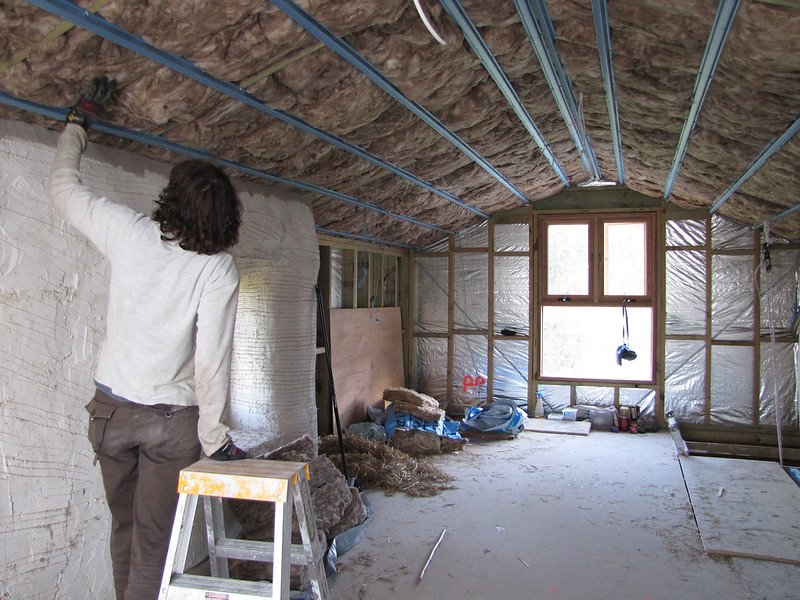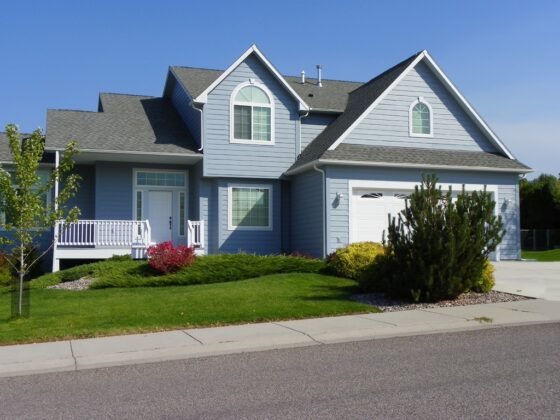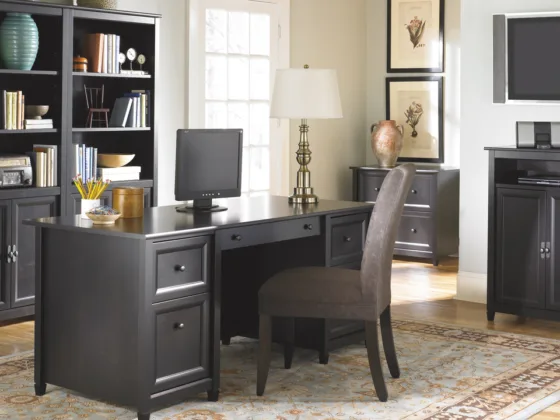Table of Contents Show
Did you know that insulating a home can cut heating and cooling costs by 15% and reduce total energy costs by 11%?
Insulation works to reduce heat transfer by sealing air escape gaps and covering areas where heat is likely to escape. This makes for a more energy-efficient home, and homeowners can save a bundle on their yearly electricity bills.

That said, when you’re in the market for home insulation, it’s easy to be overwhelmed by the sheer number of options available. With so many different types of insulation, it can be hard to find the right one for your home.
If this describes your predicament, worry not; we’re here to help. Today, we’ll be highlighting the many types of insulation available today. That way, you can pick an insulation type that’s right for your home or business.
Spray Foam Insulation
Spray foam insulation involves spraying liquid polyurethane into the wall cavities. On spraying the liquid polyurethane, it expands and creates a solid foam that acts as insulation.
Spray foam insulation is differentiated into two types, open-cell foam, and closed-cell foam. The former consists of cells that are open, which makes it softer and more malleable. Closed-cell foam, on the other hand, consists of closed cells, making them more rigid and stable.
Closed-cell spray foam tends to be more expensive than open-cell foam, but it tends to last longer. Also, it has a greater return if you’re planning to sell your home later on. However, in terms of functionality, they both work just as well.
It’s worth noting that installing spray foam isn’t as simple as pointing and spraying. You could always do that, but the results might be a tad underwhelming. For the best results, consider hiring a professional to spray-foam your building for you.
Read Also:
Foam Boards
Foam boards are a popular choice for homeowners across the US. They’re great for insulating floors and low-slope roofs without ventilation. They provide insulation by blocking heat transfer through wall studs, wood, and other elements that make up your home.
Foam boards are made from polyurethane, polystyrene, and other similar materials that are great for insulation. It’s great for both exterior and interior insulation and will work well on everything from your foundation to your ceilings. You can also install them on basement walls and unfinished floors.
Reflective Insulation or Radiant Barriers
Reflective insulation doesn’t work the same way as standard insulation types but still gets the job done. Standard insulation works by reducing heat transfer out of or into your home. Radiant barriers, on the other hand, reflect the heat away from your home.
These barriers consist of a reflective platform made from aluminum foil and a substrate material, typically, polyethylene bubbles. Homeowners install these barriers between their attics and rafters. This type of insulation is common in warm areas to reduce heat from the sun.
Blanket Batts and Rolls
There are many types of blankets, batts, and rolls of insulation, but the most popular is fiberglass. Apart from fiberglass, there are also cotton, plastic, sheep, and mineral wool varieties.
Blanket batts and rolls are among the more affordable options when it comes to insulation. Not only are the materials inexpensive, but you can install the insulation by yourself, using a few household tools.
However, you need to tread softly when installing the fiberglass batts and rolls. Ensure you wear protective clothing all through the installation. That’s because long-term exposure to fiberglass can irritate your skin, eyes, and upper respiratory tract.
However, you don’t have to worry about any serious repercussions from fiberglass exposure. Still, you certainly don’t want any skin irritation from installing your insulation.
Blown-in Insulation
Blown-in insulation is one of the best types of insulation, especially for residential buildings. It’s also among the most environmentally-friendly insulation types. That’s because it’s made from fiberglass, reclaimed cellulose material, and rock wool.
With blown-in insulation, you’ll need a machine that will blow the insulation material into the areas you want to insulate. You can rent this machine and blow in the insulation yourself. However, we still advise leaving it to the pros, for the best results.
Structurally Insulated Panels
Structural insulated panels, or just SIPS, are a type of insulation that consists of sheathing materials in the form of rigid boards and insulating foam between them. These two boards sandwich the insulation material to reduce heat loss.
The boards are oriented strand boards (OSBs) made from typical sheathing material, while the filling is either expanded polystyrene, extruded polystyrene, or polyurethane foam.
Apart from reducing heat transfer, these insulated panels also block out sound, except low-frequency sounds. Learn more about soundproofing insulation and decide whether it’s right for you.
Insulated Concrete Forms
Insulated concrete forms, or ICFs, are a form of insulation whereby builders cast H-shaped concrete walls between layers of insulation material. They create an open-air channel, resulting in high thermal resistance. It’s an excellent type of commercial insulation and is also great for homes.
How to Pick the Right Type of Insulation
Any smart homeowner would want to take all these crucial factors into account before picking a type of home insulation. That said, here are a few factors to consider before doing just that.
The Building Section You’ll Be Insulating
The first thing to consider is where you’ll be installing your insulation. For instance, insulation rolls are great for new walls. However, for an existing wall, you’re better off with blow-in insulation.
Your Area’s R-Value
The R-value denotes how resistant your insulation is to heat flow. Hotter areas require higher R-values. Check the R-value for your area to find an insulation type that meets the required R-value.
Your Budget
You want a type of insulation that you can actually afford. Explore your options and find something that fits your budget.
Different Types of Insulation Made Easy
Now that you know the different types of insulation, it’s up to you to pick the right one for your specific needs. Remember, to explore all your options before settling on an insulation type. Don’t forget to consider soundproofing while you’re at it.
For more informative content, check out the other posts on the site.









